Toyota Fuel Cell System set to make history
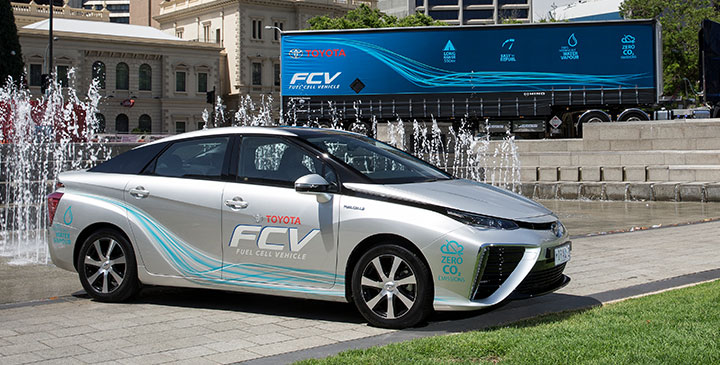
As one of the world’s first hydrogen-fuelled vehicles, Toyota Mirai is at the forefront of fuel cell technology. Meaning ‘future’ in Japanese, Mirai is aptly named. With the arrival of three Mirai vehicles to share this exciting technology, Toyota Australia is preparing for what the future holds.
While hydrogen fuel cell cars like the Mirai are currently sold in Japan, the United States and Europe – areas that have commenced the rollout of hydrogen refueling infrastructure – Australia is yet to follow.
Last November, Toyota Australia unveiled a mobile hydrogen refueller to support the three Mirai. Developed by Toyota’s local engineers and partner suppliers, it’s an innovative, temporary solution to address Australia’s current lack of infrastructure for fuel cell cars and enables the Mirai to travel around the country.
Toyota is working with all levels of government and other stakeholders to build awareness of fuel cell technology and the requirements to support development and introduction of refuelling infrastructure.
The Mirai sedan can travel around 550km1 per tank with zero harmful emissions, which is sure to be attractive to business. But opportunities for Fleet are not limited to passenger vehicles with Toyota researching the application of TFCS (Toyota Fuel Cell System) technology in the heavy duty category.
After actively testing fuel cell buses in Japan, the Bureau of Transportation of the Tokyo Metropolitan Government took delivery of their first hydrogen fuel cell bus in early 2017.
Toyota will also introduce over 100 fuel cell buses into Japan ahead of the Tokyo 2020 Olympic and Paralympics Games, with the number increasing steadily over time. The ultimate aim is to contribute to a hydrogen-based society.
In addition to buses, Toyota has scaled up its Mirai fuel cell technology to develop a strong, yet silent power source for a 36-tonne-semi trailer. Showcasing the many potential uses for fuel cells, this concept truck will be used in a feasibility study of this technology in heavy duty applications. The truck will be hauling cargo from Los Angeles to Long Beach quickly, quietly and with zero harmful emissions.
The Mirai generates electricity on-board and on demand using a fuel cell. So how does fuel cell technology work? First, oxygen from the air and hydrogen from the on-board storage tanks are pulled in to the fuel cell stack. Then through a chemical reaction, electricity is generated to power the motor, with water as the only by-product.
With no hazardous emissions, it will come as no surprise that the Toyota Mirai was awarded the 2016 World Green Car at the New York International Auto Show in March 2016.
“Just as Prius changed the world nearly 20 years ago, the hydrogen-powered Mirai is set to make history.”
“Mirai is leading the world forward towards a more sustainable future,” said Bill Fay, group vice president and general manager, Toyota Motor Sales, USA. He continued, “Just as Prius changed the world nearly 20 years ago, the hydrogen-powered Mirai is set to make history.”
Watch this space.
1Ref. European NEDC test cycle.
i-TRIL to tackle urban streets with ease
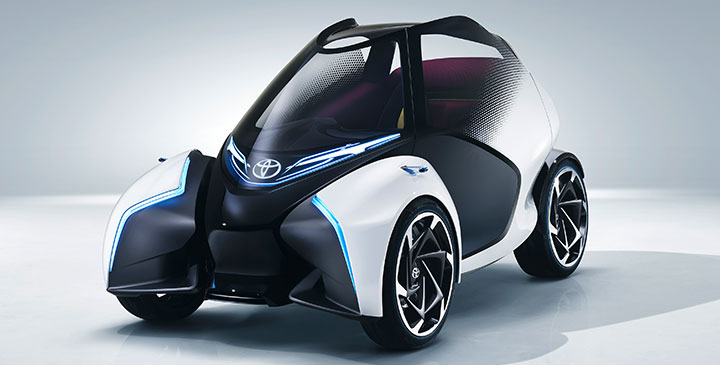
Toyota Global has unveiled a daring new concept car, designed to prove electric vehicles can be a pleasure to drive. The i-TRIL is the result of more than 40 years of research and development into vehicles that place less burden on the environment, while being practical enough to adapt to today’s changing needs – including business.
The iTRIL was designed for urban drivers who are constantly on the road, often in stop-start traffic. It’s a small, agile vehicle measuring a mere three metres long. A turning circle of just four metres adds to its suitability for navigating the narrowest of city streets – ideal for quick deliveries and city meetings. It’s super light too, weighing in at just 600kg – around half that of a standard small car.
Innovative technology allows the vehicle’s body and front tyres to lean into a corner while the rear tyres stay perpendicular at all times. It’s an angle that’s ideal for combining stability, grip and driving pleasure. When the i-TRIL is about to enter a corner, the instrument panel on the respective side lights up to let occupants know the car is about to turn.
Steering, acceleration and braking are controlled using drive-by-wire control nodes, with a simple head-up display that projects all the information. Voice activation technology controls the multimedia and infotainment systems.
While the i-TRIL is capable of operating automatically, it’s been specifically conceived to provide an exciting drive that will entice people to take control most of the time.
Butterfly-opening doors are hinged on the sloping windscreen pillars for easy access, even for rear-seat passengers. When the doors are open, they remove a section of the floor to make stepping out easier with a shorter stride. The front seats can also be swivelled up to give passengers more room to get in and out of the car.
The interior offers spacious seating for three adults in a one-plus-two layout. For the driver, a commanding yet laidback position has the feel of a go-cart. And, as there are no pedals, drivers can stretch their legs right out in comfort. During autonomous driving, the control nodes automatically retract into the driving module, which moves forward into the dashboard to give the driver even more freedom to move.
Steering away from a car-like feel, the interior has been designed more like a home, with fabric upholstery and a wooden floor – all made from recycled materials. It certainly puts a new spin on working from home.
Inside and out, the i-TRIL concept car is a statement that challenges the world of conventional driving – particularly when it comes to fleet.
Toyota Corolla Hybrid gives fleets the best of both worlds
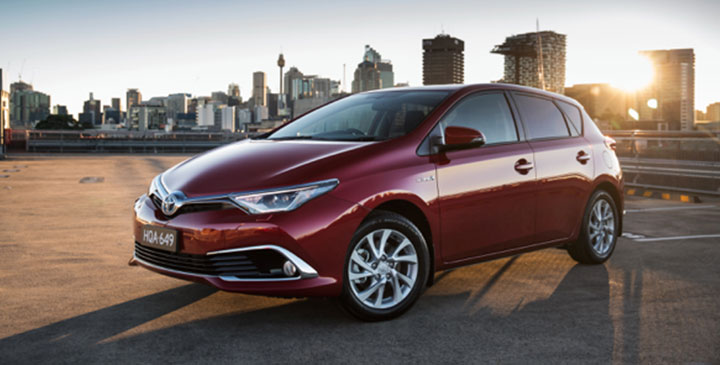
To ensure it remains ahead of the times, Toyota Corolla was released with hybrid technology in mid 2016. A fleet favourite for many years, the Corolla has evolved into an agile car that provides a dynamic driving experience with a smoother, quieter ride.
The key advantage of Corolla Hybrid is having the best of both worlds.
Fitted with Toyota’s Hybrid Synergy Drive®, the world’s leading hybrid technology, Corolla Hybrid has been proven to deliver outstanding fuel efficiency without compromising performance. By combining a 1.8L petrol engine with a 60kW electric motor, you have two power sources that work together in tandem or independently.
This advanced system intelligently manages the input from each power source depending on the driving conditions, to provide the optimum balance of performance and fuel economy.
This clever pairing delivers fuel efficiency of around 4.1L/100km1, to help benefit your bottom line. What’s more, you can monitor fuel efficiency as you drive, with all the statistics relayed on the Multi Information Display.
Hybrid Synergy Drive® also helps to minimise the output of CO2 and other harmful emissions, to ensure your business complies with global emissions regulations. Of course, Toyota Corolla Hybrid also comes with a 5-Star ANCAP safety rating so you can tick that box too.
Safety features include 7 SRS airbags and a Reversing camera2. There’s also Satellite navigation3 to help drivers get from A to B without a hitch, plus Smart Entry and Smart Start, LED headlamps and Daytime Running Lamps. And, thanks to the combination of advanced soundproofing and the electric EV mode, they’ll enjoy a truly tranquil driving experience – even in busy urban traffic.
Toyota Corolla Hybrid is about to celebrate its first anniversary – with 1,919 vehicles sold across the country since its launch last year.
Check out the Corolla Hybrid here.
1Results achieved in test conditions. Actual results may vary depending on driving conditions/style, vehicle condition and options/accessories fitted. Fuel consumption data provided for comparison purposes only. Source: ADR 81/02 combined (L/100km) for automatic models.
2Current navigation mapping database encompasses major capital and primary national road networks and offers some coverage in regional areas.
3This is a driver assist feature only and should not be used as a substitute for safe driving practices. Driver remains responsible at all times for safe driving and visually monitoring road conditions.
Uniting Communities enjoys six years of savings – and counting
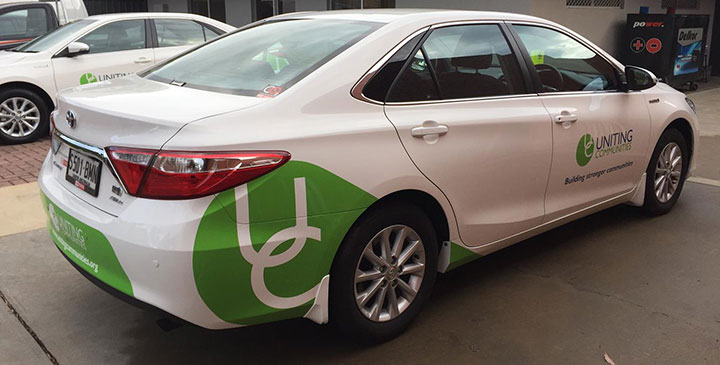
Not-for-profit organisation, Uniting Communities, has always looked for ways to streamline their costs. That way, they help meet funding commitments and continue to protect the future of the people they support.
So, in 2010, they committed to become carbon neutral through a number of initiatives, including running a largely hybrid fleet.
When it came to the Toyota range, Uniting Communities was spoilt for choice – even with hybrid vehicles. And Toyota’s commitment to offer a hybrid variant across all vehicles in the future was another great selling point. That’s why Toyota Fleet was chosen as their preferred supplier.
Six years later, Camry Hybrid now accounts for almost 75% of their passenger fleet of 125. Corolla Hybrid is another welcome addition. By supplying these hybrid vehicles, Toyota Fleet helped Uniting Communities achieve their carbon neutral certification.
“Every hybrid conversion gave us an annual reduction of 1.2 tonnes of CO2 , along with savings of over $650 per vehicle. This saves over 100 tonnes of CO2 – and $50,000 every year.”
As well as considering green credentials, vehicle safety was paramount for Uniting Communities, who always strive to buy vehicles that are 5 Star ANCAP rated.
They were impressed with Camry Hybrid’s long list of safety features, which help to keep their clients and employees safe. Its reliability was also attractive, as support workers rely on fleet vehicles to deliver vital services to some of the most vulnerable people in the community.
Over 1,500 staff and volunteers support more than 20,000 people, including the elderly, people with disabilities, youth and more, through a diverse range of services.
Running the Camry Hybrid in their fleet for the past six years, Uniting Communities continues to receive positive feedback from employees. What’s more, they’ve recently been presented with the SA Climate Leaders Award in the Community and Regions category by Premier’s Climate Change Council.
Immersed in the community service sector, support workers know the value of service only too well. It’s those strong relationships that can make all the difference.
“We receive great customer service from Toyota Fleet. They support us with vehicles that help us achieve our financial, social and strategic environmental goals, for the benefit of our community.”
With a hybrid fleet that provides $50,000 a year in savings, United Communities are equipped to continue supporting the people that need it most.
Learn more about their Carbon Neutral program here.
Emissions Transition
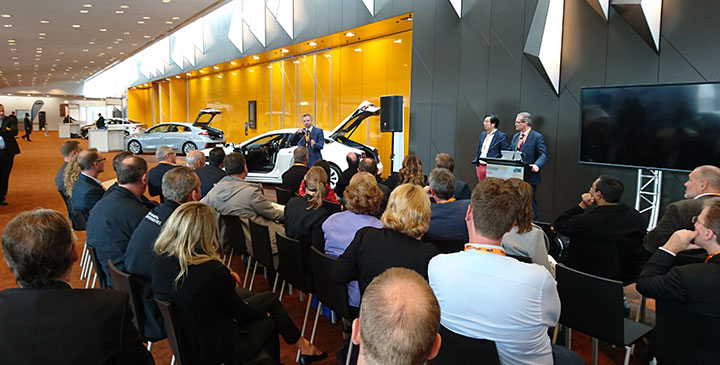
“In 2017, fleet management is focused on inter-departmental collaboration. The annual AFMA Fleet Conference is a great reality check and a chance to start the difficult discussions.” – Scott Murray, Australasian Fleet Management Association.
Collaboration is an overused term, but at the 2017 Fleet Conference it was a symbolic buzzword. An ethos fleet managers can use to instill changes to old thinking. Because the world waits for no fleet manager as we shift to a low-emission economy, and this is a marathon.
Keynote speaker Mike Antich set the tone using his 30 years of observation in US fleet editorial saying managers fall into two types: tactical and strategic. “Tactical fleet managers are putting out spot fires on a daily basis, and it’s true. You have to resolve day-to-day crises,” he said. “However, the best fleet managers can take a long-term perspective and use their strategy to implement tactics.”
Antich also said managers have a responsibility to avoid complacency and draw internal departments together, even if easier said than done. “To be best in class, you have to be strategic and focus on your internal fleet customers. You’re in customer service and all your organisation’s other departments are your customers. Too many fleet managers have internal struggle or conflict.”
He also condemned the issue of suppliers being shunned, only used when needed. “Many fleet managers make themselves as inaccessible to suppliers as possible. This is very counter-productive. Your suppliers are partners, people who can help you optimise your fleet performance.”
The most promising aspect for improving fleet emission performance is the pursuit of alternative drivetrains. Which is why the Conference backbone was about transitioning to low-emission assets in the future, and it’s closer than we realise.
Day two was sobering, focusing on the scientific slap-in-the-face on emissions and what holds Australia back, thanks to a John Cadogan reality check. “We have to ask ourselves, ‘What are emissions?’” he said. “Because the only thing we can do with carbon dioxide is make engines more efficient.”
He said bluntly, “Your opinion does not matter on things that can only be argued with facts. Things like climate change. Things like emissions.”
“We are at the top of the chain because we have access to more energy than we can derive from our food. We are the top species on the planet because we burn hydrocarbons. We need to move to a low-emission economy so that our standard of living continues, otherwise we go backwards.”
A long list of high-interest low emission vehicles (LEVs) were shown at the conference. Along with other options coming to market in the next couple of years, Mirai headlined the LEV array which generated huge interest around the Conference sessions focused on the issue of low-emission fleet solutions.
One fleet pioneering its way toward hydrogen is Stuart Nesbitt’s Moreland City Council garbage truck project. As Climate Change Technical Officer, he presented alongside Attilio Pigneri from H2U, the engineering outfit assisting with the program’s execution. An impressed audience listened to the plans for phasing out internal combustion for a renewable hydrogen fuel cell garbage truck fleet.
“We’re really taking a leap into the unknown but also setting a benchmark, encouraging others to take a lead,” said Pigneri. “We’re talking about a stop-start-stop-start system which is a huge engineering challenge for a hydrogen fuel cell drivetrain.”
Nesbitt was quizzed about forklifts, heavy vehicles and equipment use. “It’s about a full energy transition plan,” he said. “The business is focused on those big consumption targets, so once that’s been achieved it’ll filter down into the rest of the fleet because you’ve already made the investment,” he concluded.
Presenters and content at this year’s event were highly engaging and informative. Fleet management is without doubt a tactical game on a daily basis, but thinking long-term and strategically is more important than ever. The future of transport is changing rapidly and it’s encouraging to see Fleet Managers listening to the right messages, plotting smart courses, and investing in technology that makes good business sense.
Toyota Fleet and Toyota Fleet Management were proud to sponsor the 2017 AfMA Conference. Fleet management is such a dynamic profession; it demands a collaborative mindset ready to act on the big issues, which not only benefits the bottom line, but society as a whole.
AFMA (Australasian Fleet Management Association) is the non-profit organisation dedicated to informing, empowering and advocating for fleet management as a true, complex profession in its own right. Follow us on LinkedIn, Twitter, Facebook and get all the latest fleet news at www.AFMANews.com.au

